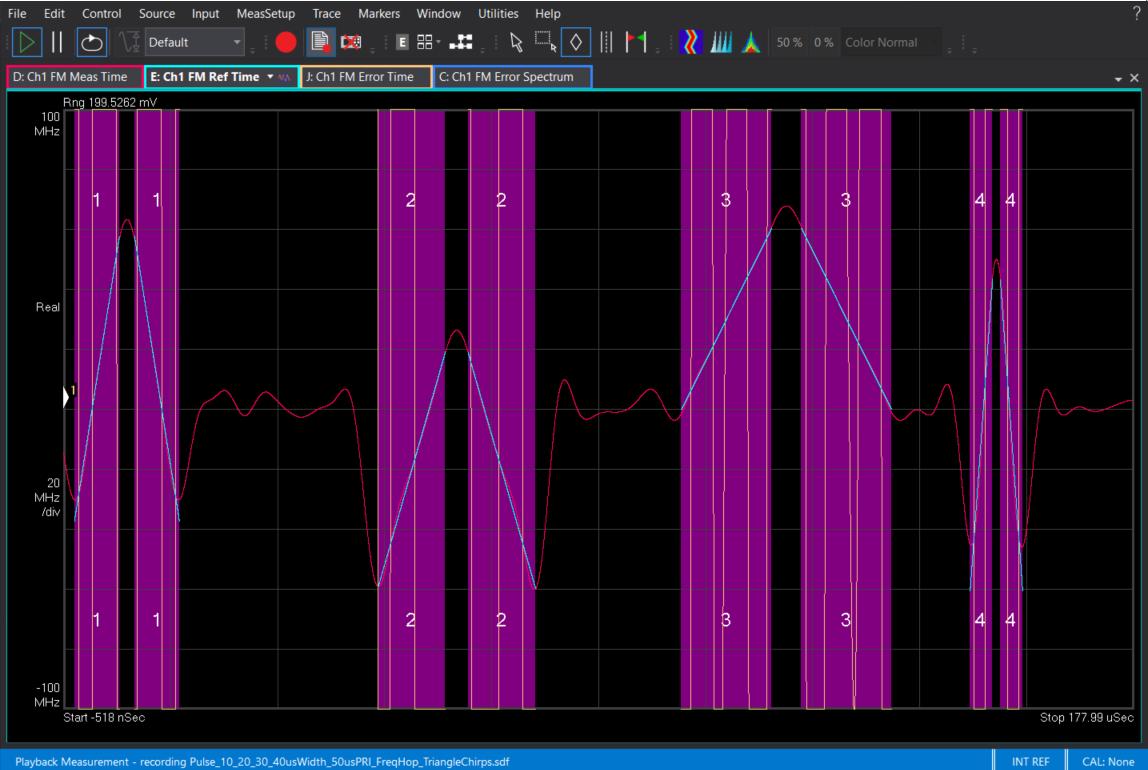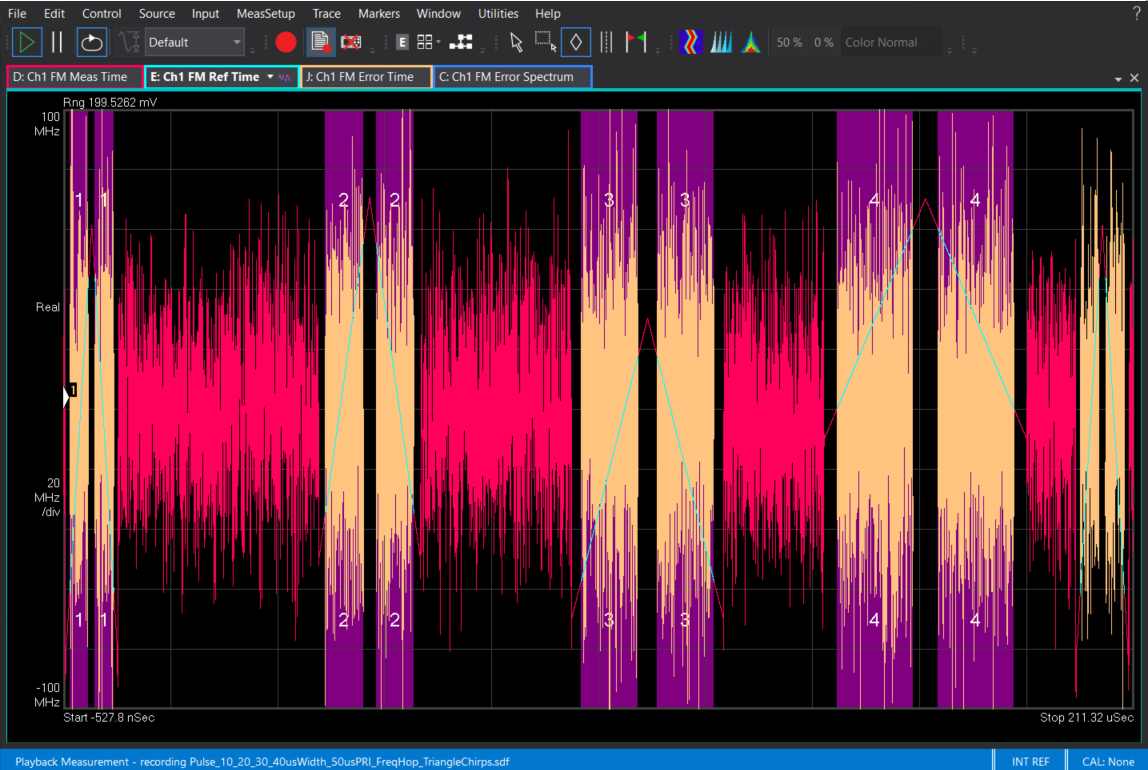FM Filtering (Advanced-Radar/Hopping)
Menu Path:
In order to trade off tracking movements in FM Frequency Modulation error against visualizing trends in a smooth trace, a trace filter is offered that enables you to set the amount of noise that will be included in you displayed trace. Setting this very, very low (e.g., 0.01%), and everything will look rounded and therefore inaccurate. If you set it too high (e.g., 50%), all of the noise in the span will be included in your trace, rendering the trace ineffective. FM Filtering specifies the 3 dB bandwidth for the low-pass differentiating filter applied to the FM Meas Time trace results. In this way, you can filter out unwanted signals and control the amount of noise included within the reported FM Meas Time trace.
The FM filter is an ideal FM differentiating filter, combined with a variable-bandwidth low-pass filter. The low-pass filter is designed using a Kaiser window, which gives good flatness in the passband combined with very good rejection in the stop band.
When the Synchronization Domain is set to linear chirp, detection becomes highly sensitive to changes in the FM filter. A very lower filter factor can wash away the chirps from the signal, but a very high filter factor can include too much noise in the chirp for it to be detected. Consideration must be taken to choose the right filter factor for linear chirp detection.
Bandwidth Relative To Span -- (valid range 0.05% to 50%) Used to calculate the FM filter bandwidth (Hz) value as a percentage of the current measurement Span (Hz).
When Auto is checked, the VSA attempts to auto detect the best bandwidth relative to span for your measurement configuration.
The determined FM filter bandwidth and time aperture are displayed below Bandwidth Relative To Span, next to the labels Resulting Bandwidth and Resulting Aperture.
As an example, here is the FM Error Time trace with an Bandwidth Relative To Span setting of 0.01%:

Here is the same trace with a Bandwidth Relative To Span setting of 10%:

- Default value (Bandwidth Factor): 5 %
